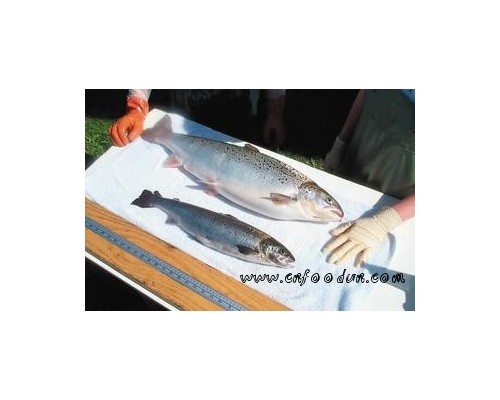Salmonella is an important cause of food-borne illnesses in humans. Farm animals and food of animal origin form an important source of human Salmonella infections. Therefore European Community legislation foresees setting of Salmonella reduction targets for animal population including broiler flocks. A European Union-wide baseline survey was carried out to determine the prevalence of Salmonella in commercial flocks of broilers with at least 5,000 birds. This survey provides information for the Salmonella target setting. The survey was the second of several baseline surveys to be conducted in the Community.
The sampling of the broiler flocks took place between October 2005 and September 2006. Five faeces samples were taken from the flocks within 3 weeks before leaving for slaughter. A total of 6,325 holdings corresponding to 7,440 flocks with validated results were included in the survey analyses.
The Community observed prevalence of Salmonella-positive flocks was 23.7%. This means that in the European Union one in four broiler flocks raised over the one year period of the baseline survey was Salmonella-positive. The Salmonella prevalence varied widely amongst the Member States, from 0% to 68.2%.
A total of 11.0% of the broiler flocks was estimated to be positive for Salmonella Enteritidis and/or Salmonella Typhimurium, the two most common serovars found in Salmonella infection cases in humans. The Member State-specific observed flock prevalence of S. Enteritidis and/or S. Typhimurium varied also greatly, from 0% to 39.3%.
The number of positive samples in a Salmonella positive flock ranged between one and five but at European Union level 42% of the positive flocks was found positive for all the five samples taken.
The five most frequently isolated Salmonella serovars from broiler flocks in the European Union were respectively in decreasing order S. Enteritidis, S. Infantis, S. Mbandaka, S. Typhimurium and S. Hadar. All these serovars, with the exception of S. Mbandaka, are frequent causes of Salmonella infections in humans within the European Union. S. Enteritidis was the most common serovar and it was detected in 37% of the Salmonella positive flocks. S. Infantis accounted also for an important proportion of positive flocks (20%). The serovar distribution varied amongst the Member States, many of them having a specific distribution pattern of their own.
Reducing the number of samples taken from a flock was estimated to have a stronger impact on the S. Enteritidis and/or S. Typhimurium flock prevalence than on the overall Salmonella flock prevalence. Reducing the number of samples taken to 2 samples per flock would lead to significantly lower prevalence estimate of S. Enteritidis and/or S. Typhimurium.
Salmonella positive broiler flocks contribute in a consequent contamination of broiler meat. Broiler meat is an important source of human Salmonella infections in EU. The risk for human health arises from accidental under-cooking of the meat or cross-contamination to other foods. Thorough cooking and strict kitchen hygiene will prevent or reduce the risk posed by Salmonella contaminated broiler meat.
While the Community reduction target will most likely be set for a transitional period only for S. Enteritidis and S. Typhimurium, it is recommended that Member States would address in their national Salmonella control programmes also other serovars when these serovars are of public health importance in their country.







